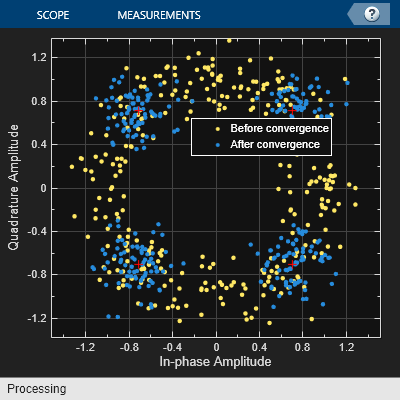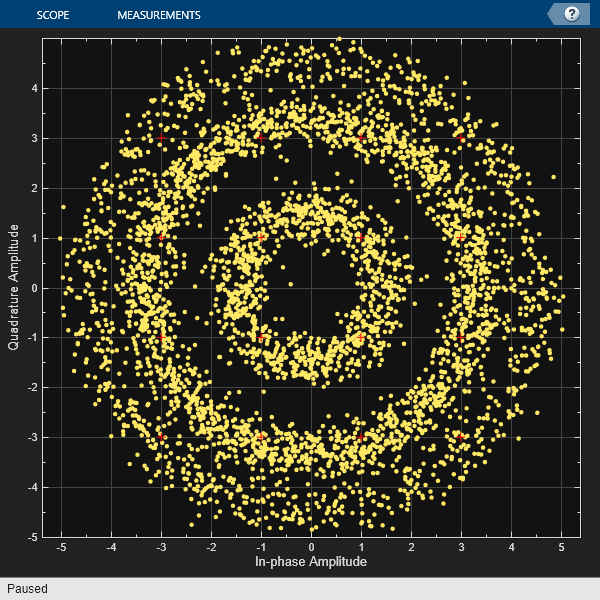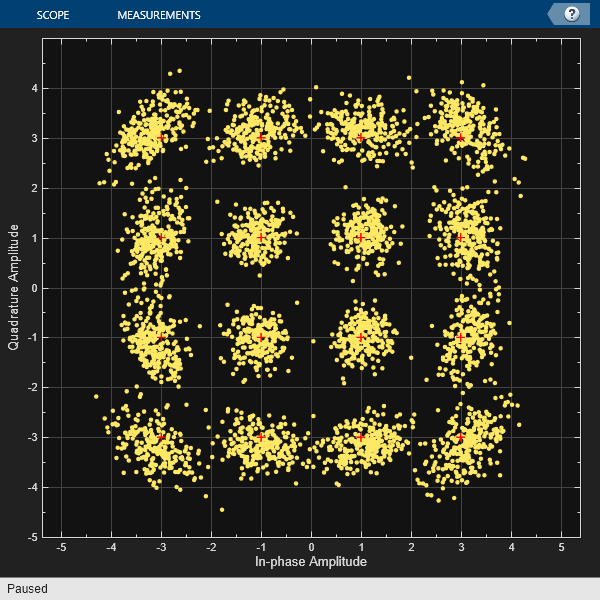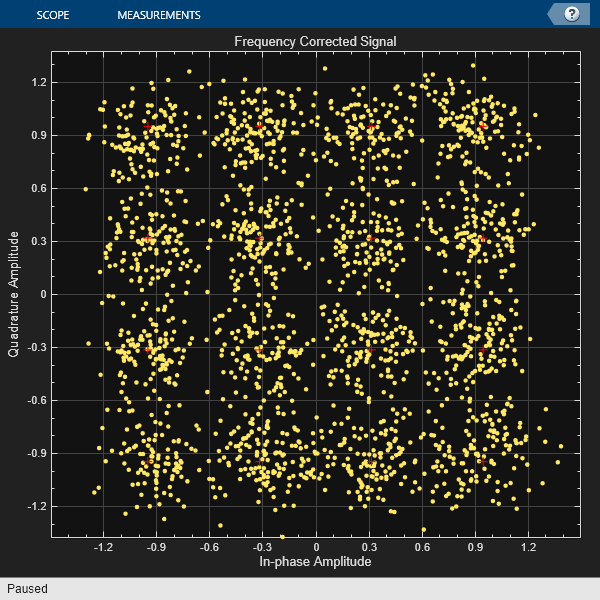comm.CarrierSynchronizer
Compensate for carrier frequency offset
Description
The comm.CarrierSynchronizer
System object™ compensates for carrier frequency and phase offsets in signals that use
single-carrier modulation schemes. The carrier synchronizer algorithm is compatible with BPSK,
QPSK, OQPSK, 8-PSK, PAM, and rectangular QAM modulation schemes.
Note
Modulation-type dependent phase ambiguities may be introduced by the synchronization algorithm. For more information, see Potential Phase Ambiguity.
To compensate for frequency and phase offsets in signals that use single-carrier modulation schemes:
Create the
comm.CarrierSynchronizerobject and set its properties.Call the object, as if it were a function.
To learn more about how System objects work, see What Are System Objects?.
Creation
Description
carrSynch = comm.CarrierSynchronizer
carrSynch = comm.CarrierSynchronizer(Name,Value)
Properties
Usage
Description
Input Arguments
Output Arguments
Object Functions
To use an object function, specify the
System object as the first input argument. For
example, to release system resources of a System object named obj, use
this syntax:
release(obj)
Examples
More About
Algorithms
The algorithm implements a closed-loop compensator that uses the PLL-based algorithm described in [1]. The output of the synchronizer, yn, is a frequency-shifted version of the complex input signal, xn, for the nth sample. The synchronizer output is where λn is the output of the direct digital synthesizer (DDS). The DDS is the discrete-time version of a voltage-controlled oscillator and is a core component of discrete-time phase locked loops. The DDS works as an integration filter.

To correct for the frequency offset, first the algorithm determines the phase error, en. The value of the phase error depends on the modulation scheme.
| Modulation | Phase Error |
|---|---|
| QAM or QPSK | For a detailed description of this equation, see [1]. |
| BPSK or PAM | For a detailed description of this equation, see [1]. |
| 8-PSK | For a detailed description of this equation, see [2]. |
| OQPSK |
|
To ensure system stability, the phase error passes through a biquadratic loop filter governed by
where ψn is the output of the loop filter at sample n, and gI is the integrator gain. The integrator gain is determined from the equation
where
Bn is the normalized loop bandwidth
ζ is the damping factor
K0 is the phase recovery gain and equals the number of samples per symbol.
Kp is the phase error detector gain and is determined by the modulation type.
| Modulation | Kp |
|---|---|
| BPSK, PAM, QAM, QPSK, or OQPSK | 2 |
| 8-PSK | 1 |
The output of the loop filter is then passed to the DDS. The DDS is another biquadratic loop filter whose expression is based on the forward Euler integration rule
where gP is the proportional gain that is expressed as
The info object function returns estimates of the
normalized pull-in range, the maximum frequency lock delay, and the maximum phase lock
delay. The normalized pull-in range, (Δf)pull-in, is expressed in radians and estimated as
The expression for (Δf )pull-in becomes less accurate as approaches 1.
The maximum frequency lock delay, TFL, and phase lock delay, TPL, are expressed in samples and estimated as
References
[1] Rice, Michael. Digital Communications: A Discrete-Time Approach. Upper Saddle River, NJ: Prentice Hall, 2008. pp. 359–393.
[2] Huang Zhijie, Yi Zhiqiang, Zhang Ming and Wang Kuang, "8PSK demodulation for new generation DVB-S2," 2004 International Conference on Communications, Circuits and Systems (IEEE Cat. No.04EX914), Chengdu, 2004, pp. 1447-1450 Vol.2, doi: 10.1109/ICCCAS.2004.1346447.
Extended Capabilities
Version History
Introduced in R2015a










